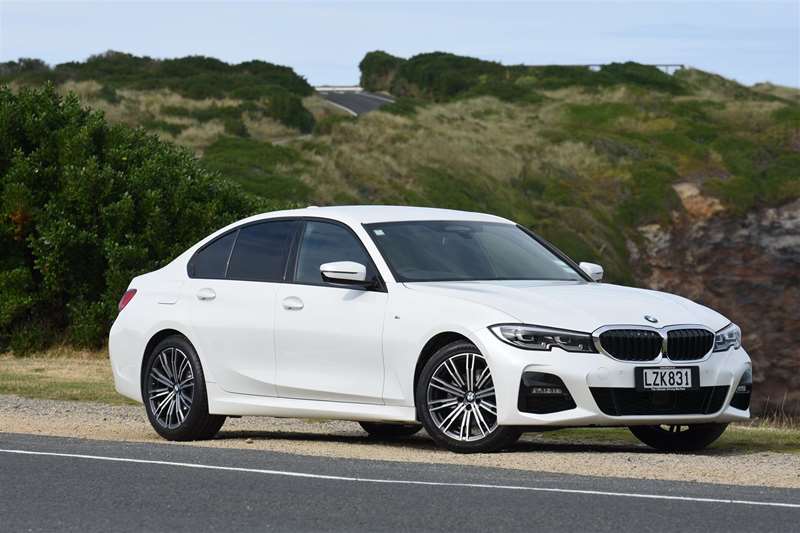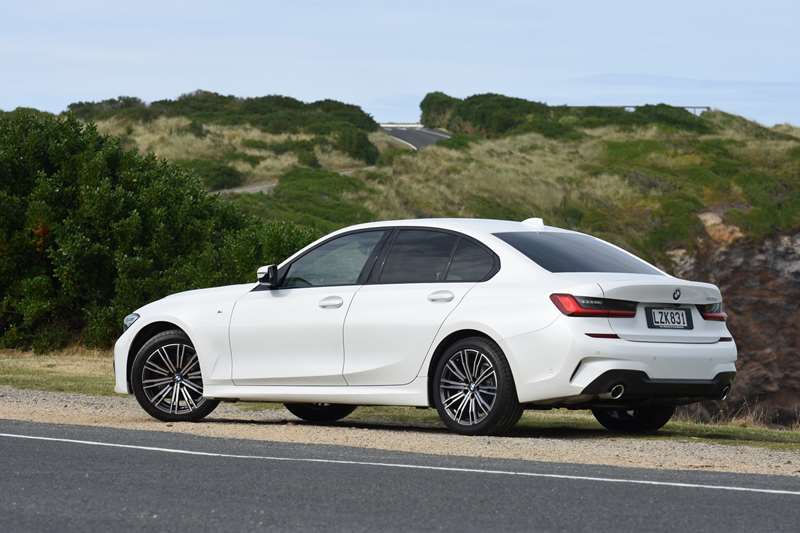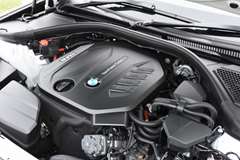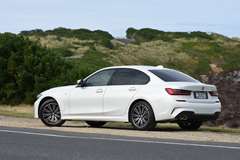From its perfectly-positioned driver’s seat to its chrome exhausts, the BMW 320d M-Sport is a five-star ride, writes David Thomson
There’S a case to be made that the seventh generation model of BMW’s 3-series is the most significant since the compact executive saloon made its debut in 1975.
For starters, it’s easily the largest vehicle to have carried the 3-series badge, measuring a shade over 4.7m. This lengthwise growth spurt, of almost 9cm over the previous model (and 19cm over the model before that), is accompanied by gains in width, wheelbase and track.
There’s underlying innovation in the suspension, too, and a raft of technological advances that has led BMW to label this its smartest car.
It’s only in engine choice where BMW, for now at least, seems to be playing it safe: 2L turbo-diesel (320d) and turbo-petrol (330i) models are available from the get-go; yes, a hybrid version was unveiled at the Geneva Motor Show in March, and the M3 performance flagship is under development, but for Kiwi customers those models are in the future.
BMW New Zealand supplied a 320d M-Sport model for appraisal. This model carries a $77,500 tag in standard form, although the test car included a further $9,790 of extras.
Taking delivery of the vehicle, I was struck by the size of the car, which was a tight fit length-wise in my admittedly modest home garage.
The styling, with its busy detailing of key panels, and prominent kidney grille, is quite different from that of the previous model. The M-Sport designation added plenty of extra exterior garnish, including a subtle aerodynamic kit, 18-inch alloys, LED fog lights and chrome exhausts.
The new model is sized and styled at least in part to meet the preferences of China, which is now — by a massive margin — the largest market for the 3-series.
Weight gain has been avoided by the greater use of aluminium in the platform and chassis structure, to such an extent that the new models typically tip the scales some 50kg lighter than those they replace.
The cabin is noticeably roomier, too. The most obvious gains are for the rear seats.
There is a clear move upmarket with the choice of interior trim materials. Burnished metallic highlighting and LED light strips play key roles in providing the cabin — front and rear — with an ambience that blends a luxury and sporting feel. The test car cabin was given a further lift by heated and power adjusting blue-stitched M-Sport seats, an M-Sport steering wheel, red and blue stitching lines on the seat belts, and M-Sport mats and scuff plates.
An even more telling change is the design of the dashboard and centre console and the layout of key controls and instruments.
The positioning of key buttons and switches has benefitted from a rethink, abetted by the further integration of touchscreen, voice and haptic control options. Adjoining digital infotainment and instrumentation screens dominate the centre and driver’s side of the dashboard in a single, clean sweep, while the latest version of BMW’s iDrive control system is located
just behind the gear lever.
The days of twiddling knobs and pressing buttons to get your BMW to do things are fast diminishing: the 3-series marks the debut of BMW’s digital personal assistant system, which is an approximate equivalent to the MBUX system used by Mercedes-Benz.
Prefacing your request with ‘‘hello BMW’’ (or ‘‘hi BMW’’ if feeling a little more casual), the car can be verbally instructed to do dozens of things, from checking the oil level and tyre pressures to reporting on the weather and activating the seat heater.
Among other clever features, the car can distinguish if the instruction is coming from the driver or passenger, and can, for example, turn on the appropriate seat heater. The assistant can also be programmed to respond to a name other than BMW. It’s even possible to configure the car so that your smartphone becomes its key.
Last and not least on the list of interesting new technical features, the test car featured as an optional extra gesture control, parking assist plus and driving assistance professional control systems.
Gesture control, which I never quite mastered, allows various multimedia functions to be activated or adjusted by gesturing in front of the touchscreen.
Parking assistant plus includes the reverse assist system Drivesouth first tested on the BMW X5 a few weeks back. This remembers the last 50m of the vehicle’s journey, and can automatically repeat it in reverse, allowing for easy manoeuvring out of tight spaces. Driving assistance professional adds active steering and lane keeping assistance systems to a comprehensive safety package that includes such items as radar cruise control (with stop-go capability), cross traffic and pedestrian alerts and autonomous emergency braking.
Other key equipment items (all of which are standard features) include a 10-speaker sound system, wireless phone charging, a head-up display and three-zone climate control.
Turning to the mechanical side, while core elements of 320d test car’s drivetrain carry over from the previous model, there is a new multistage twin-turbo set-up for the 2L engine.
Peak power and torque remain unchanged at 140kW and 400Nm, but the new turbo set-up provides more linear power delivery and an improved spread of torque. The gear ratios of the eight-speed automatic transmission have also been revised, and this plays a part in providing stronger performance (0-100kmh in 6.8sec) along with impressive economy (4.8L/100km on standard
combined economy cycle) for a conventionally powered car of this size.
On test, the drivetrain stood out for its smooth power delivery and willingness to rev freely. Gearshifts were virtually imperceptible at light throttle loads, and still smooth when the engine was worked harder. Mechanical smoothness was maintained in sport mode, which sharpens the throttle and gearshift response.
While acceleration was never quite swift enough to give the 320d a sports-car feel, it had ample pep for most situations, including for snappy highway overtaking.
As well as the overall improvements to chassis and suspension, the test car’s M-Sport status meant it was equipped with the adaptive M suspension package.
Handling proved delightfully incisive, with steering that is accurate and loads progressively turning into bends. The test car was at its absolute best through medium- and high-speed bends, demonstrating outstanding composure and balance, along with strong grip.
The adaptive suspension delivered a comfortable ride, tending towards firm, but with major bumps and surface imperfections particularly well contained. Some coarse-chip rumble aside, noise levels were very well contained, with the car’s optional acoustic glass minimising wind roar and, around town, general traffic noise.
All of which enables the 320d M-Sport to be a fine flagbearer for a new 3-series range that delivers enhanced dynamics in combination with leading-edge technology and a cabin that is more spacious and better appointed than ever before.












